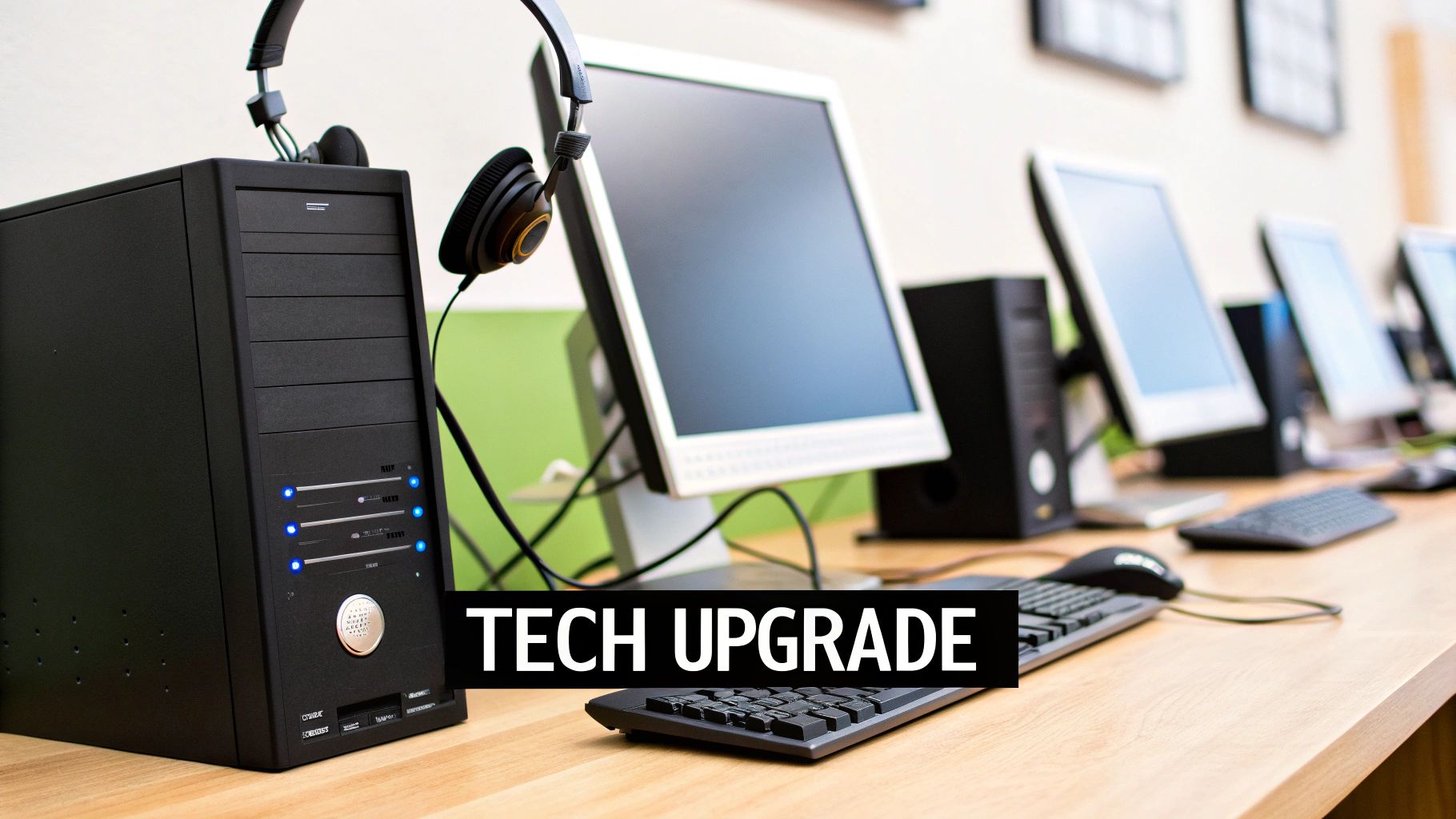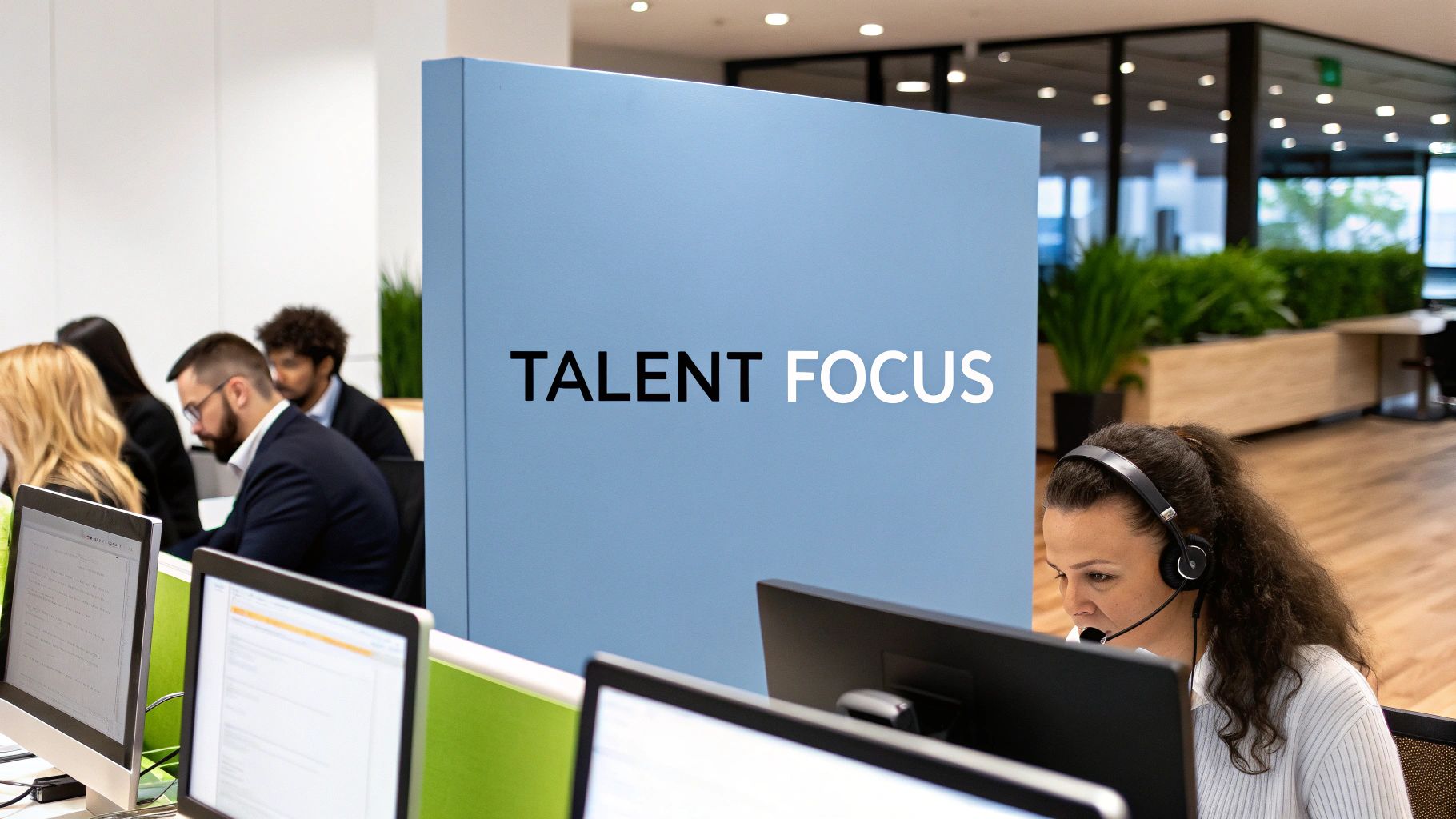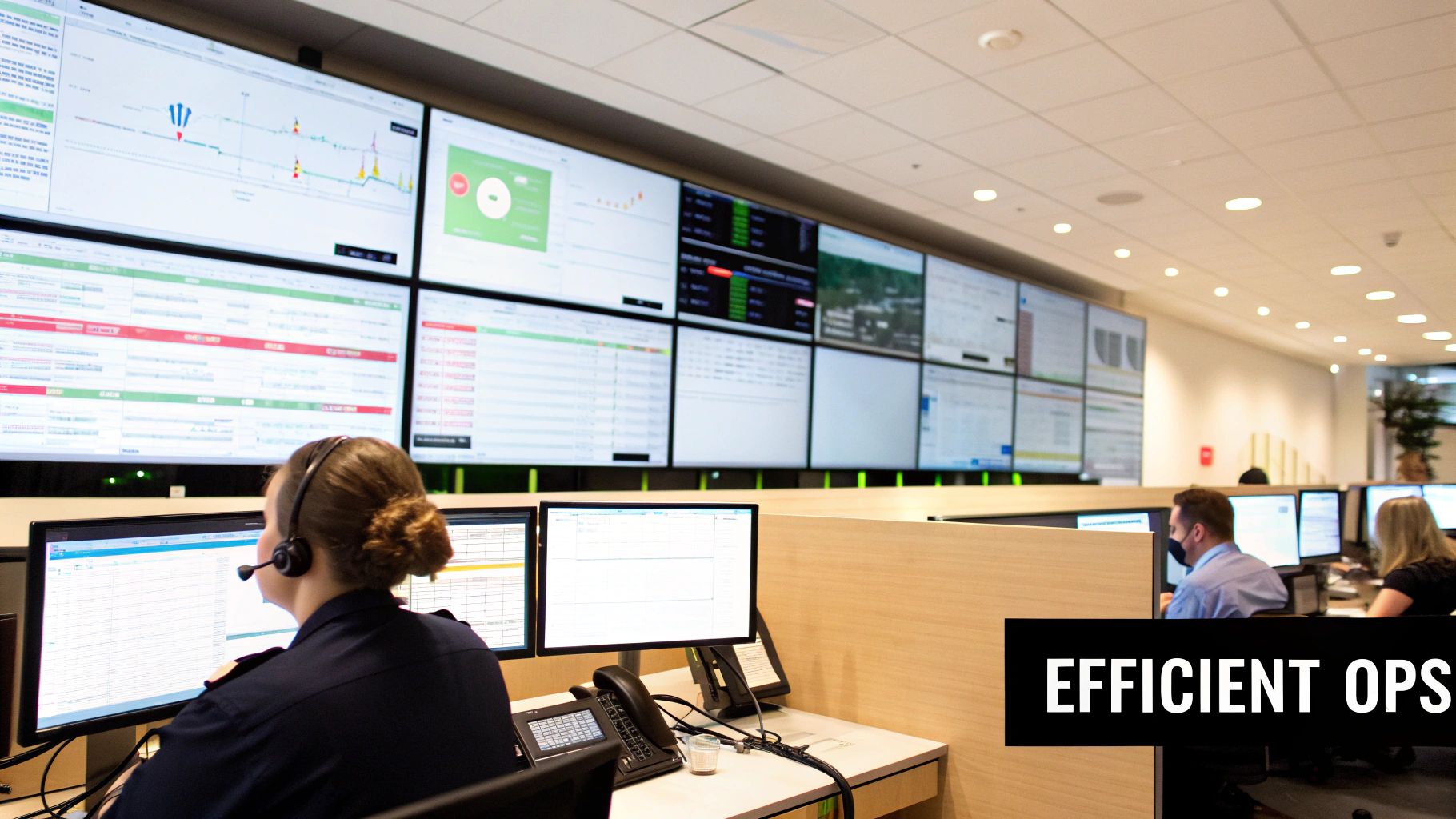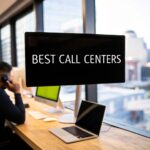Demystifying Call Center Setup Costs: What You’re Really Paying For

Setting up a call center involves various expenses beyond just purchasing phones. Understanding these costs is essential for effective budgeting and long-term success. Key areas include staffing, technology, physical space, and the distinction between one-time and recurring expenses. Let's break down each of these components for a clearer picture.
Staffing Expenses: A Major Investment
One of the most significant call center costs is staffing. This includes salaries, benefits, training, and recruitment efforts. For a call center with 20 employees, annual staffing costs can reach approximately $694,000. This figure encompasses salaries, benefits, and potential hiring expenses, which vary based on location and organizational structure. You can find more detailed information on call center staffing costs.
Beyond salaries, investing in training ensures your team delivers excellent customer service, contributing to customer satisfaction and retention. Effective recruitment strategies are also crucial for attracting and retaining skilled agents.
Technology Investments and Their Impact
Technology plays a vital role in call center operations, and the choice between on-premise and cloud-based solutions significantly impacts costs. On-premise systems require a substantial upfront investment in hardware and software, like Avaya systems. Cloud-based solutions, such as those offered by Talkdesk, typically have lower initial costs but involve recurring subscription fees.
Integrating new technology with existing infrastructure also adds to the cost. Careful planning and selection of the right technology are crucial for balancing functionality and budget.
The Importance of Physical Space
The physical space your call center occupies contributes significantly to overall costs. Rent or mortgage payments, utilities, and furniture are all factors to consider. Optimizing your layout and implementing efficient space planning can help mitigate these expenses.
Focusing on areas that provide the highest return on investment is key for smart budget management. Explore practical call center cost savings strategies to create a sustainable budget.
One-Time vs. Recurring Costs
Understanding the difference between one-time and recurring costs is fundamental to budget management. One-time costs, such as purchasing hardware or initial software licenses, are predictable upfront expenses. Recurring costs, including salaries, rent, and utilities, require ongoing monitoring and optimization.
Successfully managing both cost categories ensures long-term financial stability. To help visualize these cost components, consider the table below:
To help you understand the various cost factors involved in setting up a call center, we’ve prepared the following table:
Call Center Setup Cost Components
Overview of primary cost categories businesses must consider when setting up a call center
| Cost Component | Typical Range | One-time vs. Recurring | Impact Level |
|---|---|---|---|
| Software Licenses (Cloud-based) | $50 – $200 per agent/month | Recurring | High |
| Hardware (Phones, Headsets) | $200 – $500 per agent | One-time | Medium |
| Staffing (Salaries, Benefits) | $35,000 – $70,000 per agent/year | Recurring | High |
| Training | $500 – $2,000 per agent | One-time/Recurring | Medium |
| Rent/Lease of Facility | Varies based on location and size | Recurring | High |
| Utilities (Electricity, Internet) | Varies based on usage | Recurring | Medium |
| Furniture (Desks, Chairs) | $500 – $1,500 per agent | One-time | Medium |
| IT Infrastructure & Support | Varies based on complexity | One-time/Recurring | Medium |
This table summarizes the key cost components and their potential impact on your budget. By carefully analyzing and managing these costs, you can set up a successful and cost-effective call center operation.
The Human Factor: Mastering Staffing Expenses

Staffing is the most significant driver of call center setup costs. It's not simply about salaries; it involves a complex network of expenses that can quickly escalate your budget. However, with strategic planning and careful management, you can optimize these costs while maintaining high service quality.
Building a Sustainable Staffing Model
Creating a sustainable staffing model is crucial for achieving a balance between desired service levels and budgetary constraints. This involves considering several key factors, such as agent roles, required skill sets, and anticipated call volumes.
For instance, a call center dealing with complex technical issues will likely require more specialized, higher-paid agents compared to one handling straightforward order processing. This difference in expertise directly impacts the overall call center setup cost.
Additionally, the chosen staffing model influences the management structure. Larger teams require more supervisors and managers, which adds to the expense. Balancing the management-to-agent ratio is key for efficient operations and avoiding unnecessary overhead. You might be interested in: How to master your sitemap.
Optimizing Compensation and Benefits
Competitive compensation is essential for attracting and retaining skilled agents. However, simply offering the highest salary isn't always the best strategy. A well-designed compensation plan should include a balance of base salary, performance-based incentives, and benefits.
Consider the long-term cost of benefits. Health insurance is often crucial for attracting talent, but other benefits might not offer a good return on investment. Assessing the ROI of different benefits packages can help optimize spending while still addressing employee needs.
Reducing Turnover Costs
High agent turnover significantly impacts call center setup costs. Recruiting, training, and onboarding new hires are expensive and time-consuming. Investing in effective training programs and fostering a positive work environment can lower turnover rates and, as a result, overall costs.
Optimizing staff schedules also plays a key role in reducing turnover. Offering flexible scheduling and ensuring adequate coverage without overstaffing improves agent morale and reduces burnout. This leads to lower attrition rates and a more stable workforce, resulting in long-term cost savings.
Recruitment Strategies and Training Investments
Strategic recruitment is essential for minimizing call center setup costs. Targeted recruitment efforts that attract candidates with the right skills and experience reduce training time and improve agent performance. This targeted approach also minimizes the cost of hiring and training unsuitable candidates.
Investing in comprehensive training, while an initial expense, offers long-term cost savings. Well-trained agents are more efficient, handle calls effectively, and are more likely to stay, thus reducing turnover expenses. This proactive approach to training results in lower overall call center setup costs and improved customer satisfaction.
The Technology Stack: Investments That Actually Pay Off

Smart technology choices are essential for balancing the initial setup costs of a call center with its long-term operational efficiency. This requires a thorough evaluation of various systems and a keen understanding of their impact down the line. Poor choices can drain resources, while the right investments can significantly boost performance.
Cloud vs. On-Premise: Weighing the Costs
One of the first decisions is choosing between cloud-based and on-premise solutions. Cloud-based systems typically have lower upfront costs, which can be attractive for startups and smaller businesses. However, the recurring subscription fees can add up over time. On-premise solutions, while requiring a higher initial investment, offer more control and customization. This can benefit larger organizations with specific requirements.
In addition to staffing, technology expenses are a major factor in call center setup. These include software, hardware, internet services, and network infrastructure. For instance, call center software can cost approximately $120 per user per month, and basic hardware like phones and headsets can cost around $50 each. For a deeper dive into these costs, see this article. A comprehensive cost analysis is therefore vital before making any decisions.
Essential Software and Integrations
Besides the core phone system, several other software components contribute to overall setup costs. CRM integration, like that offered by Salesforce, is vital for managing customer interactions and tracking valuable data. Call routing software ensures calls are efficiently directed to the right agents, improving both efficiency and customer satisfaction. Analytics platforms provide key insights into performance, enabling data-driven decisions.
Choosing the right software and integrations is crucial for maximizing efficiency and minimizing expenses. Each element adds to the overall cost, so careful evaluation is necessary. For those interested in sitemap management, this resource may be helpful: How to master your sitemaps.
Hardware Considerations and Long-Term Expenses
Hardware costs, while often a one-time investment, represent a significant portion of the initial setup costs. This typically includes phones, headsets, computers, and servers, depending on the setup. While these are considered fixed costs, it’s important to factor in their lifespan and potential upgrade needs.
Beyond the initial purchase, remember to budget for ongoing maintenance and upgrades. These long-term costs can significantly impact your budget. Planning for these future expenses allows for a more realistic understanding of the total cost.
Evaluating True Technology Costs
When evaluating technology, look beyond the initial price. Implementation costs, which include setup, configuration, and training, can be substantial. Ongoing maintenance and support fees contribute to the long-term expense. Also, consider the potential cost of future upgrades to keep pace with advancements.
By considering these often-hidden expenses, you can develop a more accurate picture of the true cost of your technology. This helps in creating a realistic budget and avoids unforeseen financial burdens. A strategic approach to technology investment ensures the right balance between functionality and affordability.
Physical Space Planning: Facility Decisions That Matter

The physical setup of your call center has a significant impact on both your call center setup cost and agent productivity. A thoughtfully designed space contributes to a positive and productive atmosphere, leading to greater efficiency and lower employee turnover. In contrast, a poorly planned facility can lead to lower morale and increased operating costs.
Space Requirements and Financial Commitments
The size and configuration of your call center directly affect your real estate expenses. Overestimating your space needs results in wasted rent money, while underestimating can create a cramped and inefficient workspace. Optimizing square footage is key to achieving a balance between agent comfort and cost-effectiveness. This involves careful consideration of workstation layouts, break room design, and the allocation of common areas.
For instance, an open office plan can maximize space utilization. However, it's equally important to incorporate designated quiet zones to minimize distractions, particularly for agents handling sensitive calls. Striking this balance is vital for maximizing productivity and minimizing your initial call center setup cost.
Acoustic Considerations and Layout Strategies
Noise levels significantly affect agent performance and customer satisfaction. Excessive background noise can lead to miscommunication and increased stress. Acoustic treatments, such as sound-absorbing panels and noise-canceling headsets, can significantly enhance call quality and agent focus.
Your call center layout should also prioritize efficient workflows. Strategic team positioning and readily accessible resources, like printers and meeting rooms, can reduce wasted time and improve overall productivity. You might also want to explore sitemap organization: How to master your sitemaps.
Comparing Facility Approaches and Their Financial Implications
The chosen facility approach has a considerable impact on your call center setup cost. Traditional leasing offers stability but involves long-term financial commitments and potential build-out costs. Coworking spaces provide flexibility but may lack the necessary customization options for a dedicated call center environment. Distributed models, with agents working remotely, can potentially reduce real estate costs but necessitate investments in technology and communication infrastructure.
Each approach presents unique financial implications. Careful analysis of the long-term costs and benefits of each model is essential for sound decision-making. This analysis should encompass not just rent but also utilities, ongoing maintenance, and any required modifications.
Managing Overlooked Facility Expenses
Several often-overlooked facility expenses can significantly affect your call center setup cost. Utilities, such as electricity and internet service, represent recurring costs that can vary. Maintenance and repairs, while unpredictable, are vital for maintaining a functional workspace. Security systems and insurance safeguard your investment but contribute to ongoing costs.
Managing these expenses effectively requires proactive planning and consistent monitoring. Negotiating favorable contracts with utility providers and implementing preventative maintenance programs can help control costs. Regularly reviewing insurance policies ensures adequate coverage without unnecessary spending. Addressing these seemingly minor expenses contributes to a more predictable and manageable call center setup cost.
In-House Vs. Outsourced: Making The Right Financial Choice
Choosing between an in-house and an outsourced call center is a pivotal decision for your business, especially regarding call center setup costs. It's not a simple A or B choice. Understanding the financial aspects of each model is key to making the best decision.
Evaluating In-House Call Center Costs
Building an in-house call center offers significant control over operations. However, this comes with its own set of expenses. Consider the upfront investment in hardware and software like Five9. Recurring costs such as salaries, employee benefits, office space rent, and ongoing maintenance also contribute heavily to the overall call center setup cost. These costs are often affected by location and staffing choices.
For example, operating an in-house call center with just four staff members can cost around $300,000 per year. This includes salaries, benefits, hiring expenses, office space, software, and hardware. This resource offers further insight into calculating call center system costs.
Exploring Outsourced Call Center Options
Outsourcing presents a different cost structure with potential savings. Instead of managing all the elements yourself, you’re paying for a service. This could involve per-minute fees, agent fees, or a blended approach. This can be a significant advantage for businesses looking to control initial costs.
Onshore, Nearshore, and Offshore Outsourcing: Weighing The Costs
Different outsourcing locations—onshore, nearshore, and offshore—offer varying costs and service levels. Onshore outsourcing, within your own country, typically has the highest price tag due to higher labor costs. Nearshore outsourcing, to nearby countries, often balances cost savings with cultural similarities. Offshore outsourcing, to more distant locales, often provides the greatest cost reductions, but can sometimes create communication and management hurdles.
To help illustrate the key cost differences between in-house and outsourced models, let's take a look at the following comparison:
In-House vs. Outsourced Call Center Cost Comparison
Detailed comparison of cost factors between building an internal call center and outsourcing to third-party providers
| Cost Factor | In-House Model | Outsourced Model | Key Considerations |
|---|---|---|---|
| Setup Costs | High (Hardware, Software, Infrastructure) | Low (Often included in service fees) | Initial investment vs. ongoing fees |
| Staffing Costs | High (Salaries, Benefits, Training) | Variable (Depends on location and service level) | Control over hiring vs. access to specialized expertise |
| Operating Costs | High (Rent, Utilities, Maintenance) | Included in service fees | Predictable vs. variable costs |
| Technology Costs | High (Software licenses, upgrades) | Included in service fees | Control over technology choices vs. access to latest tools |
| Management Overhead | High (Dedicated management team) | Lower (Shared resources) | Direct control vs. reliance on third-party management |
This table summarizes the main cost differences, highlighting how in-house models require significant upfront investment while outsourced models offer more predictable operating expenses. The best option depends on your specific business requirements and long-term strategies.
Calculating Break-Even Points and Hybrid Approaches
Determining the break-even point—where the cost of in-house operations equals the cost of outsourcing—is critical. This involves assessing your projected call volume, the intricacy of customer interactions, and your desired service level.
A hybrid approach, using both in-house and outsourced resources, provides flexibility. This allows you to retain core functions internally while outsourcing less critical tasks, optimizing costs and maintaining some control.
Decision Matrices for Strategic Outsourcing
Choosing which functions to outsource requires careful planning. A decision matrix can help evaluate the costs, benefits, and risks associated with outsourcing certain tasks. This involves assessing each function’s complexity, its significance to your core operations, and the availability of qualified outsourcing partners.
Hidden Expenses in Outsourcing Contracts
Be wary of hidden expenses within outsourcing contracts. These can include setup fees, training costs, technology licensing fees, and penalties for surpassing agreed-upon call volumes. Carefully review contracts and negotiate terms upfront to avoid unexpected costs. This careful review will help you make the most informed choice about your call center setup cost, ensuring a path that benefits your business.
Location Strategy: Regional Cost Advantages Worth Exploring
Choosing the right location for your call center is crucial for managing call center setup costs. While it may seem secondary, location influences everything from real estate and labor costs to regulations and workforce skills. Strategic planning here can unlock significant savings without impacting service quality.
Regional Cost Structures and Strategic Opportunities
Different regions offer distinct cost advantages. Labor costs in developing countries are typically lower than in developed nations. This creates opportunities for geographic arbitrage, allowing businesses to leverage lower costs while maintaining quality. However, it’s important to balance savings with factors like infrastructure reliability and language proficiency.
Outsourcing call center services also introduces varying regional cost structures. Call centers in the United States and Canada can charge between $22 and $35 per hour, while those in Eastern Europe may charge between $12 and $25 per hour. This variability highlights the importance of considering regional labor rates when calculating call center setup costs. For further insights, explore resources on call center costs and location. When comparing in-house versus outsourced options, consider third-party providers like a dedicated phone answering service to potentially reduce setup expenses.
Emerging Call Center Hubs Beyond the Obvious
While established outsourcing destinations remain popular, exploring emerging call center hubs can reveal compelling alternatives. These hubs often offer a blend of lower costs and a growing skilled workforce. Thorough due diligence is crucial, however, to assess infrastructure and the regulatory environment.
Factors like political stability, economic growth, and reliable internet connectivity are essential for long-term success. Balancing these factors with cost considerations ensures a strategic choice that aligns with your business objectives.
The Impact of Time Zone Alignment, Language, and Culture
Beyond cost, time zone alignment significantly impacts service delivery and customer satisfaction. Operating in a time zone aligned with your target market can improve responsiveness and customer experience. However, depending on the location, this might also increase labor costs.
Language capabilities and cultural compatibility also influence both cost and performance. Multilingual agents can broaden your reach but may command higher salaries. Cultural alignment facilitates better communication and customer understanding but can limit location options. Balancing these factors requires a comprehensive assessment of your target market and service needs.
Frameworks for Evaluating Location Factors in Your Context
A well-defined framework is essential for evaluating location factors. This framework should encompass not just cost, but also operational needs, customer expectations, and long-term business goals. A matrix weighing cost against service quality, time zone compatibility, and language proficiency can help pinpoint the optimal location.
This matrix can also incorporate qualitative factors like cultural nuances and regulations. By prioritizing key factors and assigning appropriate weights, you can make informed decisions aligned with your specific business context. This systematic approach ensures your location strategy optimizes call center setup costs without compromising customer experience or long-term success.
Strategic Budget Optimization: Where Smart Leaders Invest
Smart call center leaders know that call center setup costs aren't simply about cutting expenses. They're about strategically allocating resources for maximum impact. This involves investing wisely in areas that boost efficiency and customer satisfaction while reducing unnecessary spending.
Phased Implementation: A Smart Approach to Call Center Setup Costs
One effective strategy for managing call center setup costs is a phased implementation. Rather than launching a full-scale operation immediately, consider a gradual rollout. This approach distributes capital expenditures over time, minimizing the initial financial burden. You could start with a small team focused on a specific customer segment, expanding as your business and budget grow.
Phased implementation allows you to refine processes and identify areas for improvement before scaling up. Start with essential features and add advanced functionality as needed, optimizing your call center setup costs.
Leveraging Cloud Technologies to Control Call Center Setup Costs
Cloud technologies offer significant cost advantages. Migrating infrastructure and software to the cloud transforms large capital expenses into manageable operational costs. This eliminates the need for expensive hardware and reduces ongoing maintenance, significantly lowering overall call center setup costs.
Cloud computing also offers greater scalability and flexibility. You can easily adjust resources based on demand, avoiding costs associated with overstaffing or underutilizing on-premise infrastructure. This is particularly beneficial for businesses with fluctuating call volumes.
Workforce Optimization: Enhancing Productivity Without Expanding Headcount
Optimizing your workforce is crucial for minimizing call center setup costs. Focus on enhancing agent productivity instead of simply increasing headcount. Investing in effective training programs equips agents with the skills to handle calls efficiently and resolve issues quickly, reducing call handling times and improving customer satisfaction.
Implementing performance incentives and recognizing top performers boosts productivity and reduces agent turnover. Creating a positive work environment helps retain experienced agents and reduces recruitment and training costs.
Technology Investments That Deliver Real ROI
Strategic technology investments can significantly reduce operational expenses. The right call routing system can streamline call flow, ensuring customers connect with the appropriate agent quickly. This reduces call handling times and improves customer satisfaction.
Investing in a robust CRM system gives agents ready access to customer information, empowering them to provide personalized service and resolve issues efficiently. This personalized approach improves customer satisfaction and loyalty, reducing costly follow-up interactions.
Quality Assurance: Minimizing Costly Errors
Effective quality assurance processes minimize costly errors and improve the overall customer experience. Regularly monitoring calls and providing constructive feedback to agents identifies areas for improvement and prevents recurring mistakes. This proactive approach minimizes customer complaints and reduces the need for costly rework.
Investing in quality assurance software automates the monitoring process, offering valuable insights into agent performance and identifying trends. This data-driven approach helps pinpoint specific areas for improvement and deliver targeted training, further optimizing call center setup costs and enhancing service quality.
By strategically investing in these areas, you can build a financially sustainable call center that delivers exceptional customer experiences. A well-planned approach to call center setup costs isn't just about saving money; it's about creating a foundation for long-term growth and success.
Ready to optimize your call center operations without high upfront costs and long-term leases? Explore how Seat Leasing BPO can provide flexible workspace solutions tailored to your needs, helping you save up to 80% compared to traditional office arrangements. Visit Seat Leasing BPO today to learn more.




